Description:
The Osteokine system was developed in Germany by Orthogen GmbH . The enclosed, sterile dual bag system enables simple aseptic processing of whole blood to produce autologous Platelet Rich Plasma (PRP)
What is it?
Osteokine is a device which is used to produce Platelet-Rich-Plasma (PRP)
What is PRP?
PRP is a preparation of autologous concentrated platelets (thrombocytes). PRP produced by Osteokine contains therapeutically significant concentrations of platelets
How does it work?
Citrated whole blood is taken from the horse and placed into the red-capped Osteokine bag. After processing in a special centrifuge a pellet of PRP is generated which can be re-suspended to treat the horse from which it was taken
What can it be used for?
PRP has been shown to accelerate healing in injuries involving fibrous tissues (tendons, ligaments, skin) and has also been used in bone healing
Has it been tested?
Widely in human medicine. Early stages in equine. Product Specifications
Processing Osteokine
| Image |
Description |
|
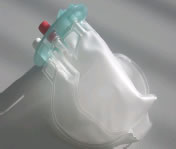 |
The empty Osteokine Bag |
|
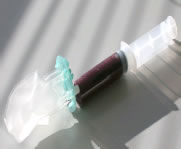 |
Whole blood is injected into the first compartment |
|
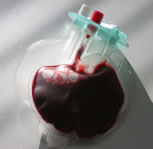 |
The first compartment is full and must now be centrifuged. |
|
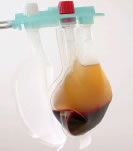 |
After the first spin |
|
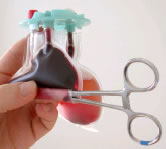 |
The supernatant is now transferred into the second compartment via the sterile lock and the bag is spun again. |
|
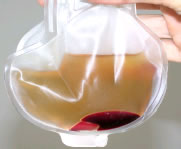 |
After the second centrifugation the bag now contains platelet poor plasma as supernatant and a pellet of platelet rich plasma. |
|
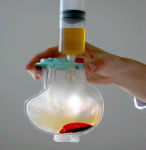 |
The platelet poor plasma is decanted off leaving the PRP plug which can now be re-suspended and extracted for use. |
|
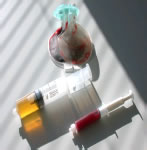 |
Syringes containing PPP and PRP. |
|
Why Osteokine ?
- Concentrated platelets are a rich source of useful growth factors
- Osteokine is for autologous use, minimising the risk of disease transmission
- Platelets are fresh and still functional, resulting in an optimum growth factor outpu
- Total operating time to get PRP is about 30 min.
- The Osteokine-System is easy to operate.
Benefits of Osteokine
- Accelerated healing of tissues such as, skin, bone, tendon, ligament
- Produces growth factors (biological signalling agents)
- Accelerated vascularization
- Reduced time of new tissue maturation
- Improved bone density
- Reduced perioperative traumatic pain
The growth factors contained in PRP include
- PDGF (Platelet derived growth factor)
- FGF (Fibroblast growth factor)
- TGF-ß (Transforming growth factor-ß)
- TGF-a (Transforming growth factor -a)
- EGF – (Epithelial Growth Factor)
PRP provides strictly local production of natural, autologous growth factors in physiological concentrations and combinations at the site of application. This stimulates regeneration and recruitment of stem cells to the site of the lesion
|